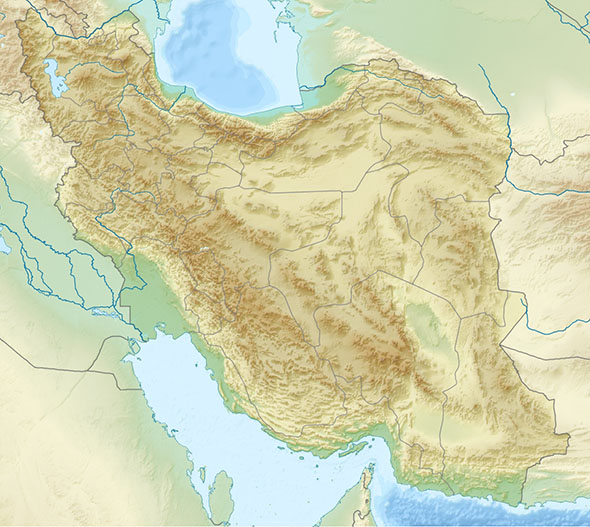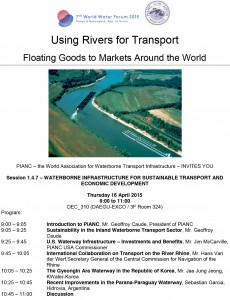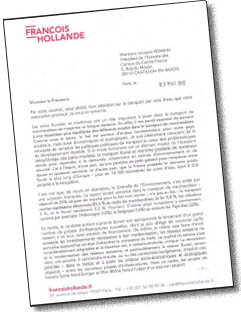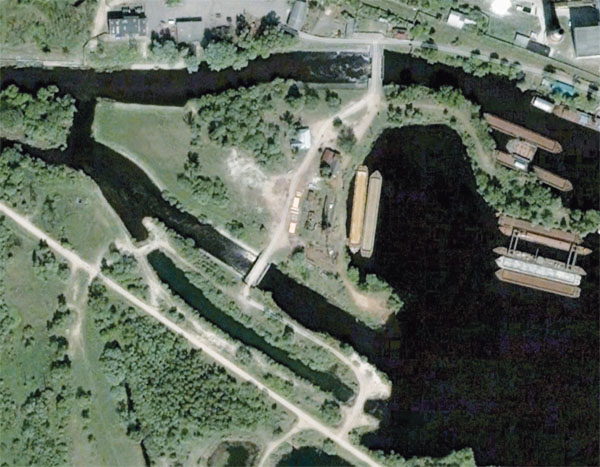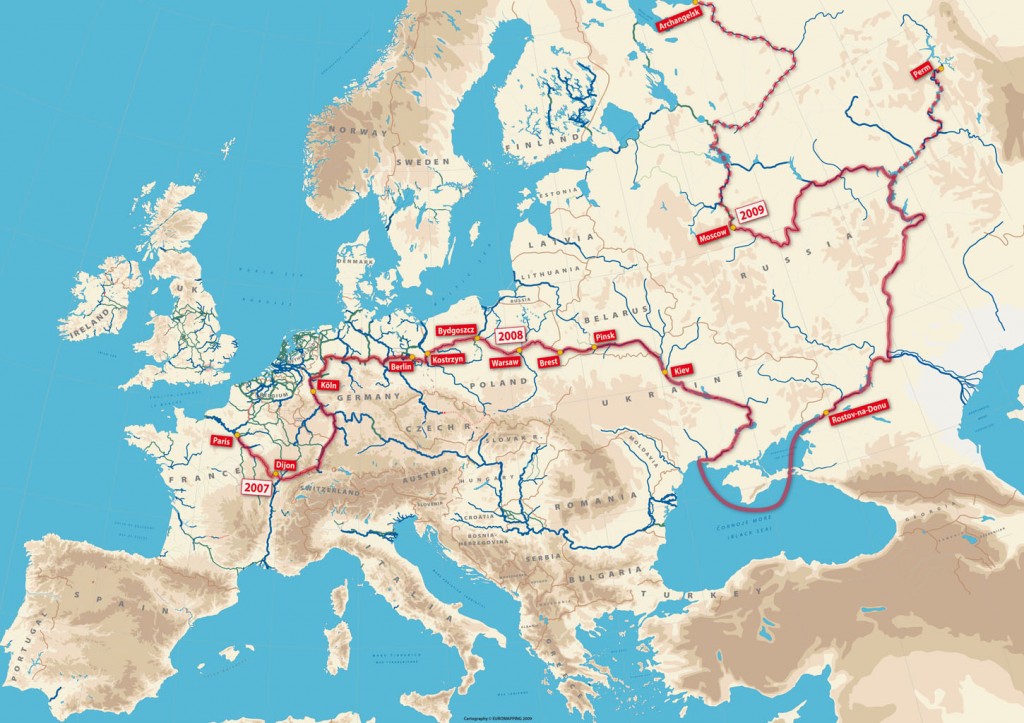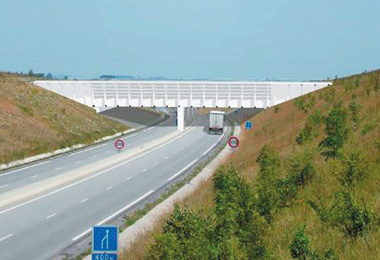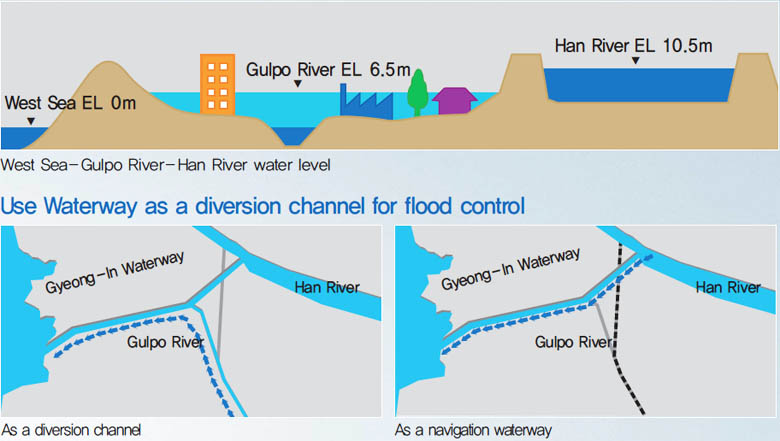The Seine-Nord Europe Canal project is still alive!
The proposed Seine-Nord Europe Canal will create a high-capacity freight corridor from Le Havre to northern France, the Benelux countries and the Rhine, for a cost estimated at €4.3 billion, of which €2.1 billion to be funded by a private partner. The selection process with the two declared candidates for building and operating the canal – Bouygues Travaux Publics and Vinci Concessions – is expected to be completed by the end of 2012.
Of course there are reasons for concern. The economic outlook is bleak, as France prepares for her austerity diet, and there is no shortage of bad omens. Everybody I’ve spoken to since the change in government has expressed fears for the 106km-long new canal, despite its trans-European character. A transport ministry memo tabled the option of cancelling the project. But the Seine-Scheldt link is still Project 30 in Europe’s transport infrastructure programme!
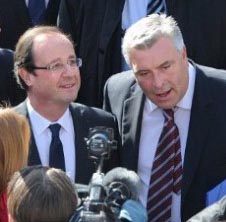
President François Hollande and Minister for Transport and Maritime Affairs Frédéric Cuvillier - ©LeMoniteur.fr
Transport Minister Frédéric Cuvillier, interviewed on June 23, was critical of the project’s funding model, which appears to have overestimated the ability of the future private-sector partner to put up one fifth of the investment cost in return for the operating revenue (tolls) over a 40-year concession. Both the previous government and VNF were discreet on this subject in the run-up to the elections, but the reality today is that the funding package is short of target by around €2 to 2.5 billion.
The minister underlined that major infrastructure projects, such as the Lyon-Turin rail link or the Seine-Nord Canal, “can only go ahead if the European funding is guaranteed at a reasonable level.” To date, the anticipated EU funding of the investment has been fixed at about €330 million, or less than 8% of the total investment. In view of the growth package negotiated by European leaders, part of which involves spending unallocated funds on infrastructure projects, it is felt that a strong case can be made for stepping up the EU’s share to 20% or even more. Getting the project under way despite such unfavourable circumstances would send a very strong message about Europe and the capacity of member states to plan for the long term.
Rumours of abandonment of the project, which VNF has been working on intensely since it was founded in 1991, were fuelled by political as well as economic arguments. The greens have always been luke-warm about new waterway links. They accept the argument that waterborne transport is the most energy-efficient and least pollutant mode, but they are convinced that rail provides an equivalent service, and that railway investments should take priority.
Already in a report produced in 1997 for the mayors of Lyon and Marseille, I predicted that the increase in passenger movements by rail would threaten the capacity of rail to handle freight economically. Today the case is proven, as the railway lobby in France is pushing for the construction of no less than 1000km of new railway lines, to give rail solutions a chance of competing with the alternatives. But this competitiveness could only be obtained by direct or indirect subsidies which are contrary to EU policies and decisions. By contrast, the waterway lobby has been pressing the case for infrastructure improvements with a more balanced approach, recognising the value of road and rail in combined transport solutions.
Since the June 23 interview there has been a clash between the Transport Minister and a predecessor in the previous government Jean-Louis Borloo, incidentally instigator of the Grenelle round table on the environment.
Setting aside the party politics and the inevitable rhetoric on both sides, the fact is that a new funding package is now to be assembled, and submitted to the European Commission at the end of the year. The increased EU funding would be matched by an additional effort by the regions benefiting from the new infrastructure.

Artist's impression of the 1300-m long aqueduct carrying the future canal across the Somme valley (© VNF-MSNE)

